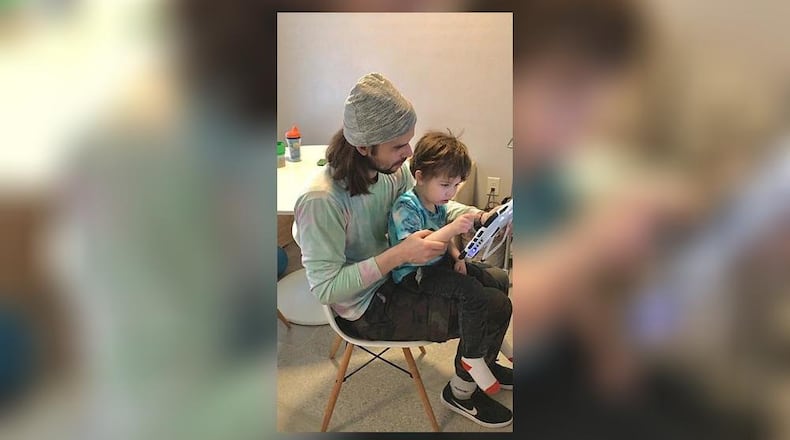At its heart, her job hasn’t changed. Bohannon still works to help children develop language skills. In recent weeks, however, that has meant communicating with them over video as opposed to talking to them face-to-face at the hospital.
The process started gradually. Earlier in March, the hospital gave families the option of coming in for therapy or switching to video. There were precautions taken for the people who did want in-person therapy. Therapists maintained as much social distance as possible and wore a mask when they could.
» MORE COVERAGE: How respiratory therapists are leading the fight against COVID-19?
In late March, the decision was made to switch to video-only therapy, not only in speech therapy but also in occupational therapy, physical therapy and audiology. Since then, the rehab division at Dayton Children’s Hospital has been seeing about 60 percent of its normal caseload, which is still a large number — 800 in the first week of April.
Several clinics at the hospital also offer video visits, including pulmonology, hematology/oncology, ENT (ear, nose and throat), nephrology, sleep, orthopedics and sports medicine, gastrointestinal, endocrinology and diabetes, neurology and behavioral health.
Bohannon still goes into the offices at the hospital but communicates with children and their families through her laptop. On the other side, she sees kids using laptops, phones, iPads, you name it.
In some instances, there are benefits, Bohannon said. Kids with poor attention spans may like the video option better. After all, this is an age in which people watch other people take toys out of boxes on YouTube or play video games.
“There’s a natural interest we have in watching others,” Bohannon said.
One local child working with Bohannon is 3-year-old Harry Wolfinbarger, of Franklin. His dad Paul said the video sessions are relatively the same, but he has to be more hands on to help Harry with the iPad application he uses.
» DOWNTOWN BUSINESS: Fitness studio offering classes online
“It’s actually good in that way,” Paul said. “It makes me become more involved and better educated on what’s happening with him.”
Harry is non-verbal autistic and has made a lot of progress since starting therapy at 18 months old.
“He’s gone from not really being focused on wanting to have a verbal interaction at all,” Paul said, “to approaching you and talking at you in gibberish, and if you can get him to focus, he sings songs in gibberish to different melodies. It’s a bunch of little things that add up and makes a big difference in your everyday life.”
Bohannon encourages parents to start therapy if they think their kid needs it even during these stay-at-home times because the younger they start, the better the results will be.
“If you have concerns about your child, I don’t encourage the wait-and-see method,” she said. “A typical late-talking toddler, about half of them will catch up on their own. About half will not. I am not going to leave my child’s development to a 50-percent chance.”
About the Author

